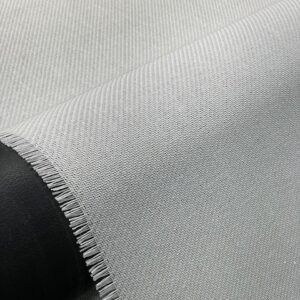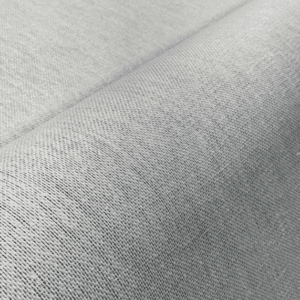HEMPEARTH MXH6000D127 – Hemp Double Bias – 457g/m² x 1270 mm – 22.4 Meter Roll $65 Per Meter
Product description
Innovation that works: The combination of leading edge technical HEMP fibers with collaborative, process-driven solutions
HEMPEARTH™ Double Bias is an environmentally friendly and sustainable alternative to traditional composite reinforcements such as glass and carbon fiber. As well as its environmental credentials, hemp fiber/polymer has an attractive natural aesthetic and excellent vibration damping properties. Suitable for all laminating processes, including hand-layup, vacuum bagging and resin infusion.
Further advantages are vibration damping properties which are much greater compared to glass or carbon fiber, and less fragile fracture behavior than carbon fiber.
Key performance advantages:
- Very high specific stiffness and strength
- Architecture optimized for composite processing and performance
- Reliable and highly consistent performance across batches
- Viscoelastic behavior providing very efficient vibration damping
- Excellent inherent compatibility with thermosets via covalent bonding
- Very low CTE, hence high thermoelastic compatibility with carbon fibers
- Highly radio-transparent across the entire RF spectrum (1 – 40 GHz) even in thick laminates
- Long fatigue life cyclic loading
- Compatible with vacuum infusion, wet layup RTM, BIM, autoclave processes and compression molding
About Hemp fiber/polymer
Hemp fiber/polymer is environmentally friendly, non toxic, and a sustainable alternative to traditional composite reinforcements such as glass or carbon fiber.
How to Process
Hemp fiber can be processed in a similar way to most dry composite reinforcements including glass or carbon fiber reinforcement and is suitable for use with a wide variety of resins such as epoxy, vinyl ester and polyester resin, including more sustainable or environmentally friendly synthetic and bio-based systems. Hemp reinforcement can be used on its own or in conjunction with other types of reinforcement, including glass or carbon, to achieve the desired properties or appearance.
Dry hemp fiber can be laminated using a range processes including hand layup, vacuum bagged hand layup, resin transfer molding (RTM) and resin infusion.
It is particularly well suited to resin infusion with the fiber’s structure allowing good resin flow through the laminate. The vacuum consolidation results in a high fiber to resin ratio and the vacuum infusion process produces void free laminates with an excellent visual appearance.
Uses
Double Bias Weave
Aviation:
- Wing and tail surfaces: The bias cut of the fabric allows it to conform to compound curves without wrinkles, making it ideal for trimming wing tips and tail surfaces.
- Structural components: The enhanced torsional and shear resistance makes double bias fabrics suitable for various structural parts where these stresses are a concern, such as in the fuselage or other areas prone to twisting and bending.
- Lightweight construction: Double bias carbon fiber fabrics, especially those with lower weights like 100gsm, are used in drones, model aircraft, and other applications where weight reduction is crucial.
Marine:
- Boat Hulls: Double bias fabrics are used in the construction of boat hulls, where their strength and flexibility help create a strong and durable structure.
- Decks: They are also used in boat decks, contributing to the overall structural integrity of the vessel.
- Stringers and Bulkheads: Double bias fabrics are suitable for reinforcing stringers and bulkheads, which are essential structural components within a boat.
- Joining Laminates: They are used to join laminates, such as bulkheads and hulls, providing strong and reliable connections.
- Strip Planked Structures: Double bias fabrics are also useful in strip-planked boat building, where they help create strong and watertight bonds between planks.
Automotive:
-
Structural components:
Double bias fabrics can be used in panels, body parts, and other structural elements where strength and stiffness are crucial, while minimizing weight.
-
Driveshafts and Torque Tubes:
The +45°/-45° orientation is ideal for components subject to torsional loads, like driveshafts and torque tubes.
-
Composite parts:
The fabric is compatible with various resin systems (epoxy, polyester, vinyl ester) and can be used in hand lay-up, vacuum infusion, and resin transfer molding processes, making it versatile for different composite manufacturing methods.
-
Reinforcement for other materials:
Double bias fabrics can be combined with other materials to create hybrid composites, offering a balance of properties.
Recreational:
- Snowboards and Skis: Double bias carbon fiber is used to enhance the board’s torsional stiffness and responsiveness.
- Boats and Water Sports: It reinforces hulls and other structural components in boats, kayaks, and other watercraft, providing strength and durability in a marine environment.
- Windsurfing and Kitesurfing: Used in the construction of windsurfing and kitesurfing boards, providing the necessary strength and flexibility for these dynamic sports.
- Other Sports: Double bias fabrics can be found in various other sports equipment where strength, flexibility, and impact resistance are crucial, such as in certain types of helmets or protective gear.
Industrial:
-
Marine:
Double bias fabrics are frequently used in boat hulls, decks, and other structural components due to their ability to conform to complex shapes and provide strength and stiffness.
-
Automotive:
They are used in automotive panels, chassis, and bodywork, offering a good balance of strength, flexibility, and resistance to torsional forces.
-
Aerospace:
Double bias fabrics are found in UAVs, aircraft components, and other aerospace applications where lightweight strength and complex shapes are essential.
-
Industrial Moulds and Tooling:
The fabric’s ability to conform to complex shapes makes it suitable for creating molds and tooling for various industrial processes.
-
Structural Reinforcement:
They are used to reinforce composite frames and panels in a variety of industrial applications.
-
Joining Laminates:Double bias fabrics are often cut into strips for joining hulls, decks, and bulkheads in composite structures.
How to Buy
This 457g hemp fiber/polymer cloth is 1.27m (39.37″) wide and the fabric is sold by the linear meter on 25 meter rolls. Simply enter the qty according to the number of linear meters you want to buy; the fabric will be supplied in 25 meter rolls.
Please note: Our hemp/polymer composites come on a 25 linear meter rolls
Storage
Hemp fiber/polymer should be stored in a cool dry place away from direct sunlight. Hemp fiber/polymer can absorb moisture from the atmosphere so drying may be required before use, especially if exposed to excessive humidity.










